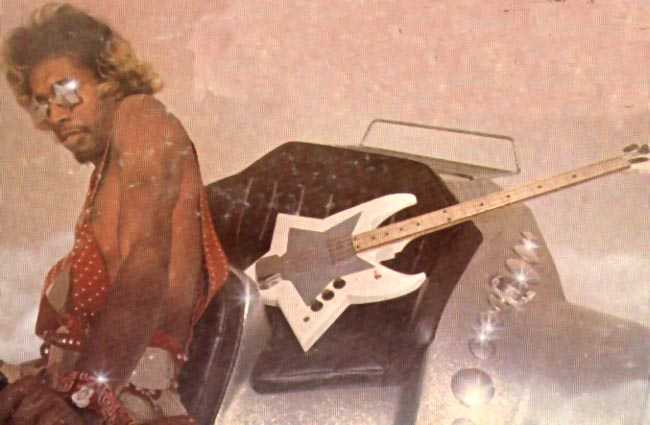| The Flashlight | "The Space Bass is
the Place"
The Creation of Bootsy's Space Bass |

|
| The Player stretches out with his new toy, courtesy of "Sir Larry Pless." Photo by George Whiteman, 1976. |
Bootsy's space bass is as much a part of him as his music and the way he plays it. Just like Bootsy's star glasses, his custom-made star-shaped bass sets him apart from from other great funk bassists like Larry Graham of Sly & the Family Stone & Graham Central Station, Louis Johnson of the Brothers Johnson, Mark Adams of Slave, and Ronald LaPread of the Commodores. The space bass adds to Bootsy's far-out aura and is an integral piece of why funkateers dig him so much.
Bootsy probably knew how important and great this new space bass creation was early on, as he gave the man who built the guitar for him a knightly title. He is credited as "Sir" Larry Pless on Bootsy's first album.
So here's the story of the origin of Bootsy Collins' custom-made star-shaped space bass in the words of Larry Pless, the bass's creator/builder. (Thanks to Ron McGinnis for contacting Larry to tell his story.)

The Creation of the Space Bass by Larry Pless



You can contact Larry with inquiries about his custom-made guitars and basses at lbpless@tir.com.


|